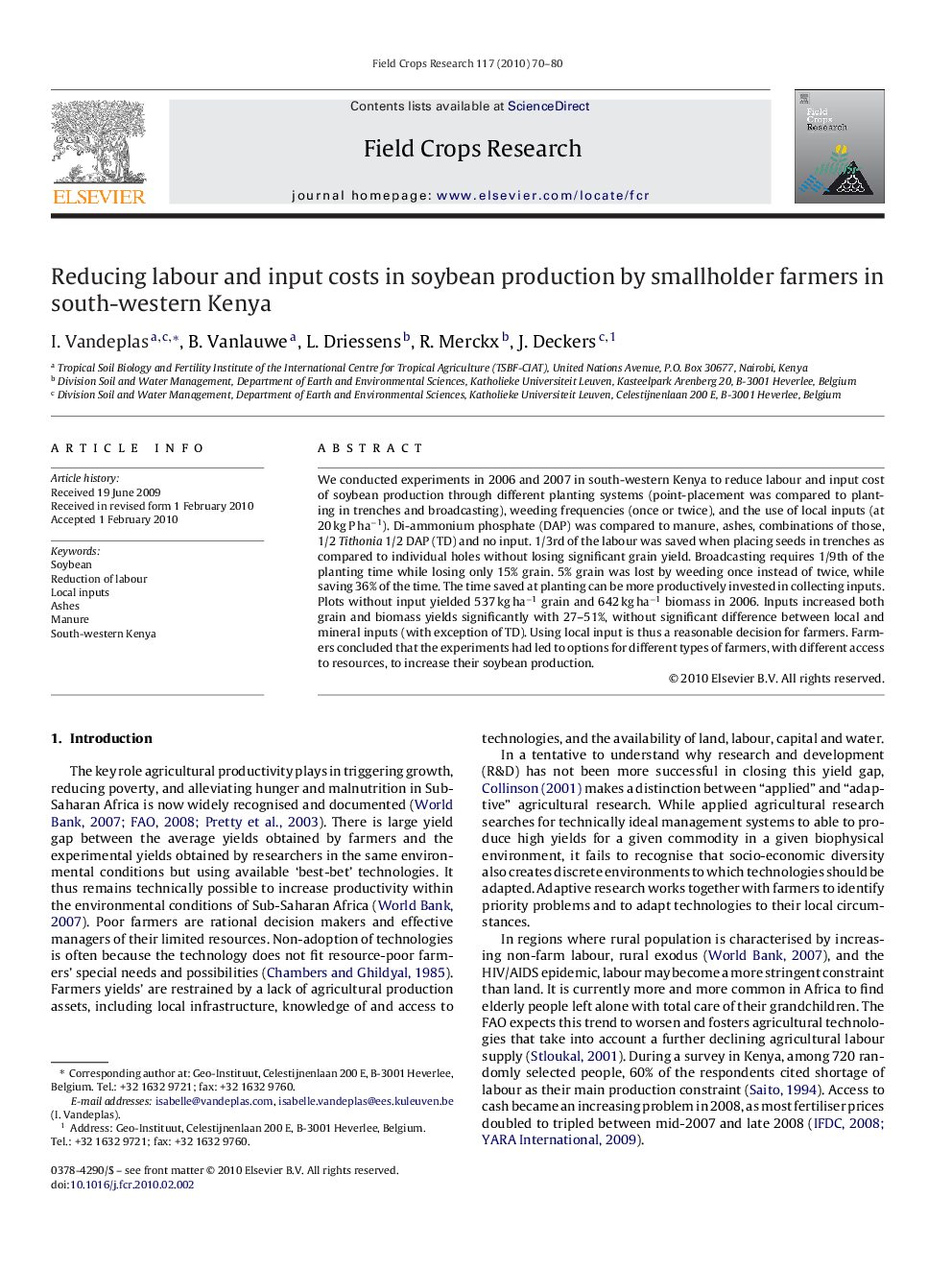| Article ID | Journal | Published Year | Pages | File Type |
|---|---|---|---|---|
| 4511002 | Field Crops Research | 2010 | 11 Pages |
We conducted experiments in 2006 and 2007 in south-western Kenya to reduce labour and input cost of soybean production through different planting systems (point-placement was compared to planting in trenches and broadcasting), weeding frequencies (once or twice), and the use of local inputs (at 20 kg P ha−1). Di-ammonium phosphate (DAP) was compared to manure, ashes, combinations of those, 1/2 Tithonia 1/2 DAP (TD) and no input. 1/3rd of the labour was saved when placing seeds in trenches as compared to individual holes without losing significant grain yield. Broadcasting requires 1/9th of the planting time while losing only 15% grain. 5% grain was lost by weeding once instead of twice, while saving 36% of the time. The time saved at planting can be more productively invested in collecting inputs. Plots without input yielded 537 kg ha−1 grain and 642 kg ha−1 biomass in 2006. Inputs increased both grain and biomass yields significantly with 27–51%, without significant difference between local and mineral inputs (with exception of TD). Using local input is thus a reasonable decision for farmers. Farmers concluded that the experiments had led to options for different types of farmers, with different access to resources, to increase their soybean production.
